#patent services
Text
Pre-examination System——One Way to Expedite Prosecution of Invention Patents in China
Besides patent prosecution highway (PPH) and prioritized examination, pre-examination system is also one way to expedite prosecution of invention patents in China.

From 2016, many intellectual property protection centers have been successively set up throughout China. These IP protection centers perform patent pre-examination services for patent applications. Applications that pass pre-examination can quickly enter the examination channel before the CNIPA.
How fast?
According to an official news release, the time to grant a patent application submitted to CNIPA after passing pre-examination can be shortened. It is about 3 months for invention patents; about one month for utility model patents; and less than 10 days for design patents.
What are the requirements for requesting pre-examination?
In order to apply for pre-examination before an IP protection center in China, an application must satisfy the following four conditions:
a) The applicant should submit the pre-examination application to the proper IP protection center prior to formally submitting the patent application to CNIPA;
b) The registered address of the applicant must be in a location where an IP protection center is located;
c) The applicant has been recorded before the IP protection center; and
d) The application submitted must be within the technical field of the IP protection center.
It should be noted that different IP protection centers in China provide pre-examination services in different technical fields. Therefore, the applicant should check whether their inventions are within the technical field of a specific IP protection center.
Can foreign applicants request for pre-examination?
It should be noted that the pre-examination system is not applicable for Chinese national phase entry application of a PCT international application.
In addition, the registered address of the applicant (enterprise, university, or research institute) must be in a location where an IP protection center is located, and the application submitted must be within the technical field of the IP protection center.
Therefore, if a foreign applicant wants to file a request for pre-examination, the applicant should have an entity registered in China.
Different IP protection centers provide patent pre-examination services in different technical fields.
The Beijing Center mainly focuses on the fields of generating new information technology and high-end equipment manufacturing.
The Shanghai Pudong Center focuses mainly on the fields of biomedical and high-end equipment manufacturing.
The Guangdong Center focuses mainly on the fields of new generation of information technology and biological industry.
So, if a foreign applicant wants to register a company in China to be qualified for pre-examination, he/she should choose a place where 1) a protection center is located; 2) the technical filed of the protection center is close to the technical field of the company.
4 notes
·
View notes
Text
What is the difference between a Utility Patent and a Plant Patent in Intellectual Property?
In Intellectual property law, Utility Patent and Plant Patent serve to protect different types of inventions and discoveries. Here’s a detailed comparison of the two:
Utility Patent
Definition:
A utility patent protects new and useful processes, machines, articles of manufacture, compositions of matter, or any new and useful improvement thereof.
Scope:
Covers a wide range of inventions, including mechanical devices, electrical circuits, chemical compositions, software, business methods, and more.
Requirements:
The invention must be novel, non-obvious, and useful.
Detailed description of the invention is required, including how to make and use it.
Duration:
Typically lasts for 20 years from the filing date of the patent application.
Examples:
A new type of engine, a pharmaceutical drug, a software algorithm, a household appliance, etc.
Plant Patent
Definition:
A plant patent protects new and distinct varieties of plants that are asexually reproduced.
Scope:
Specifically limited to new plant varieties that are asexually reproduced, meaning the plant must be reproduced by means other than seeds, such as by grafting, cutting, layering, or other non-sexual methods.
Requirements:
The plant must be novel and distinct from known varieties.
The plant must be capable of asexual reproduction, ensuring that the new variety can be reliably reproduced.
Duration:
Typically lasts for 20 years from the filing date of the patent application.
Examples:
A new variety of rose, an apple tree with unique characteristics, a distinct type of succulent, etc.
Key Differences
Type of Invention:
Utility patents cover a broad range of inventions and improvements across various fields.
Plant patents are specifically for new plant varieties reproduced asexually.
Reproduction:
Plant patents require the plant to be reproduced asexually to ensure the distinct characteristics are consistently replicated.
Utility patents do not have such a requirement.
Content and Claims:
Utility patents require a detailed description and claims that define the scope of the invention.
Plant patents require a detailed botanical description and a declaration of the new and distinct characteristics of the plant.
Complexity and Application:
Utility patent applications are generally more complex and extensive, involving claims, drawings, and specifications.
Plant patent applications focus more on the detailed botanical description and evidence of the plant's distinctiveness and asexual reproduction capability.
In summary, while utility patents provide broad protection for a wide array of inventions, plant patents are specialized for protecting new plant varieties reproduced asexually. Each type of patent has distinct requirements and serves different purposes in the realm of intellectual property.
#legal services#legal advice#law firm#patent registration#patent services#patent application#patent#legal help#legal assistance#business#legal advisory services#services#inventions
0 notes
Text
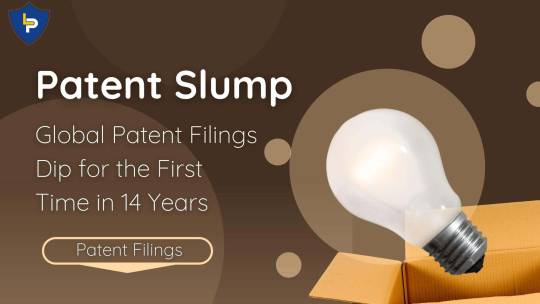
Global Patent Filings Dip for the First Time in 14 Years
For over a decade, global innovation has been on a steady rise, reflected in a consistent increase in patent filings. But a recent report by the United Nations World Intellectual Property Organization (WIPO) throws a curveball. For the first time in 14 years, international patent filings have declined. The report highlights a 1.8% drop in filings in 2023 compared to 2022, totaling 272,600 applications. This dip is attributed to two major factors: economic uncertainty and rising interest rates.
For More Information read our blog : https://lexprotector.com/blog/patent-filing-global-filings-dip-for-the-first-time/
0 notes
Text
Trade Innovation

Looking for reliable legal consultants in Jaipur to protect your trade innovations? Our firm offers comprehensive services including patent registration, trademark registration, copyright registration, and more. From Agmark registration to APEDA registration online, we cover all facets of intellectual property protection. Trust us for seamless barcode registration and hassle-free food license registration in Jaipur. Let our experienced team safeguard your business interests with meticulous attention to detail. Contact us today for expert assistance in navigating the complexities of trade innovation.
#patent services#trademark registration#copyright registration#agmark registration#apeda registration#food license#barcode registration
1 note
·
View note
Text
Exploring the Importance of Plant Patents in Agricultural Innovation
Plant Patents in Agricultural Innovation

The idea of plant patents in agricultural innovation is crucial, where productivity and sustainability depend heavily on innovation. In addition to safeguarding plant breeders’ intellectual property rights, plant patents encourage ongoing research and development in the agricultural industry. Gaining insight into the significance of plant patents can help us better understand how they promote innovation and help progress agriculture worldwide.
The Affordable Patent Agency provides comprehensive patent services, including plant patents in agricultural innovation. Our approach extends beyond patent writing and filing, drawing from extensive research and startup experiences. We ensure maximum protection and monetization potential for innovative agricultural endeavors by strategically crafting patents and intellectual property portfolios. Rest assured, our cost-effective solutions prioritize quality, guaranteeing that your invention receives the broadest protection it rightfully deserves.
Plant Patents in Agricultural Innovation:
A Protective Measure Against Innovation
Plant patents in agricultural innovation serve as a protective measure against innovation through several vital mechanisms.
Exclusivity and Rights Protection
Grants breeders have exclusive rights to their plant varieties.
Prevents unauthorized reproduction, sale, or use of patented varieties.
Encourages investment in research and development without fear of immediate imitation or appropriation.
Legal Framework and Dispute Resolution
Establishes a legal framework for resolving disputes related to intellectual property rights.
Allows breeders to take legal action against infringers.
Deters potential infringers and safeguards the interests of innovators.
Incentivizing Novel Traits and Characteristics
Encourages the introduction of new and distinct plant varieties.
Stimulates exploration of novel traits and characteristics in crops.
Expands the genetic diversity of cultivated plants.
Promoting Transparency and Knowledge Exchange
Requires breeders to disclose detailed information about patented varieties.
Facilitates the exchange of knowledge and best practices among breeders, researchers, and farmers.
Enhances transparency and accountability within the agricultural innovation ecosystem.
Overall, plant patents in agricultural innovation function as a crucial protective measure that safeguards the intellectual property rights of breeders and fosters a conducive environment for continuous innovation and improvement in the agricultural sector.

Enhancing Agriculture Through Innovation
Beyond protection, plant patents enhance agricultural techniques and technologies. Plant patents encourage breeders to create new plant varieties, improving crop yields, disease resistance, and agricultural output.
Plant patents also incentivize breeders and research organizations to collaborate and share knowledge, fostering innovation and expertise. This collaborative ecosystem promotes agricultural innovation, creating sustainable farming practices and robust crop types for different environmental circumstances and consumer preferences.
Agricultural innovation plant patents can solve global problems like food security and climate change. Breeders can reduce the negative effects of climate variability on agricultural productivity and assure food security for a growing global population by developing drought-resistant, heat-tolerant, and nutrient-rich crop types.
Plant patents boost investment in niche and specialty crops that lack breeding incentives. Diversifying crop kinds strengthens agricultural systems and encourages biodiversity, reducing reliance on commodity crops and monoculture farming concerns.
Frequently Asked Questions
What Types of Plant Varieties Are Eligible for Plant Patents in Agricultural Innovation?
The types of plant varieties that are eligible for plant patents in agricultural innovation include new and distinct varieties of asexually reproduced plants, including cultivars, hybrids, and genetically modified organisms (GMOs). To qualify for patent protection, these varieties must be novel, non-obvious, and reproducible.
How Long Does a Plant Patent Last in Agricultural Innovation?
A plant patent in agricultural innovation lasts for 20 years from filing the patent application. Plant patents granted under the Plant Patent Act provide protection in the United States. Once the patent expires, the plant variety enters the public domain, allowing others to propagate and use it for commercial purposes freely.
What Are the Benefits of Obtaining a Plant Patent in Agricultural Innovation?
The benefits of obtaining a plant patent in agricultural innovation include exclusive rights to the breeder, allowing them to control the patented plant variety’s propagation, sale, and distribution. This exclusivity gives breeders a competitive advantage, enabling them to recoup investments in research and development and generate profits from their innovations. Additionally, plant patents incentivize the development of new and improved plant varieties, driving innovation and enhancing agricultural productivity and sustainability.
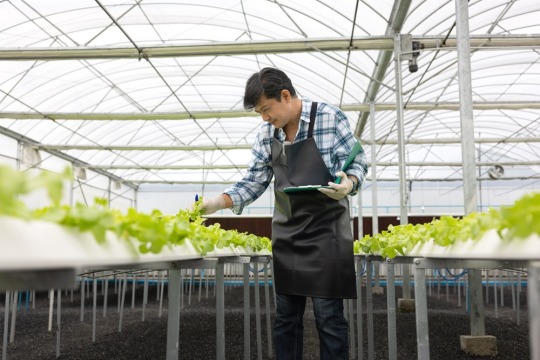
Plant Patents in Agricultural Innovation in Dallas
Patenting an agricultural plant innovation is complicated and requires the skills of patent law and agricultural innovation experts. In agricultural innovation, you need a patent agent or attorney with experience safeguarding your plant patents.
At Affordable Patent Agency, LLC, we specialize in affordable patent filing services for agricultural inventors. We will guide you through the patenting process to protect your plant discoveries with a comprehensive understanding of inventions and patent regulations.
Contact our professional patent agency today to protect your agricultural inventions. Affordable Patent Agency, LLC will protect agricultural inventions with you.
Inquire About Your Plant Patent Today Call Affordable Patent Agency, LLC at (855) 444-1946
Affordable Patent Agency, LLC
4131 N. Central Expressway Suite 900, Dallas, TX 75204
(855) 444-1946
1 note
·
View note
Text
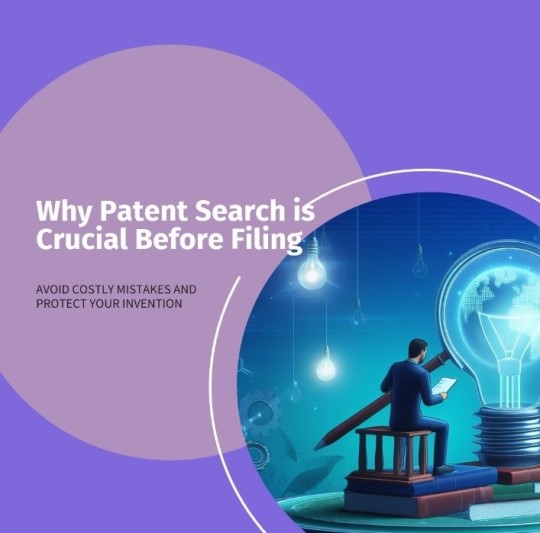
Safeguarding Innovation: The Imperative of a Patent Search Before Filing
In the thrilling pursuit of innovation, inventors often find themselves navigating uncharted territories, driven by the passion to bring novel ideas to fruition. However, amidst the creative fervor, it is paramount for every inventor to pause and recognize the pivotal role of a patent search before filing. This formal blog elucidates the profound significance of prioritizing a patent search, unraveling the layers of its importance in the intricate tapestry of the innovation process.
1 note
·
View note
Text
Patent
A patent is a legal monopoly, granted for a limited time by a country to the owner of an invention in exchange for public disclosure of the invention. A patent gives an inventor the exclusive right for a limited period of time to stop others from making, using, offering for sale, selling or importing the patented invention without the permission of the inventor. Merely holding a patent does not give the owner the right to use or exploit the patented invention. That right may still be affected by other laws such as health and safety regulations, food and drugs regulations or even by other existing patents. That is why a patent is called a "negative right".
Who can file a patent in India?
An application for a patent for an invention may be made by any person claiming to be the true and first inventor of the invention or by his/her assignee or by the legal representative of any deceased person who immediately before his death was entitled to make such an application. There are no age requirements and a minor is also entitled to apply for a patent. An application may be made solely or jointly with any other person. Foreigners and nationals not living in India need an address for service in India for filing an application in India. They may appoint a registered agent or representative whose address for service can be the address for service in India.
Grant Of A Patent
The grant of an application is published in the Official Journal and is notified therein for post-Grant opposition. A patent can be revoked by filing a post-grant opposition within one year from the date of publication of the grant of patent.
Post - Grant Procedures
It is possible for a patent to be revoked on the grounds of: prior publication anywhere in the world, public use or knowledge in India, lack of novelty with regard to the subject matter, obviousness, lack of inventiveness, ambiguity, insufficiency of description of the invention, fraud, false suggestion or representation that the person named as the inventor is not the true inventor, lack of utility, non-patentability of subject matter (E.g. computer programme per se, atomic energy, mere admixture, mere arrangement of known devices, process of testing, method of agriculture or horticulture, process of medicinal treatment), failure to furnish or falsity in information regarding corresponding applications in other countries supplied to the Controller or that the invention is contrary to law or morality.
Examination of Application
The Indian Patent Office makes both formal and substantive examinations. A Request for Examination has to be made within 48 months of the priority date by paying the requisite fees. If no request is made within the stipulated time period, the application will not be examined and the application will be considered as withdrawn by the applicant. In India, it is not possible to file a request for examination after the deadline by paying a penalty or surcharge. For assistance with the patent process, it is advisable to consult a patent attorney. You may count on them for advice on patent registration and associated services. Additionally, if you are looking to protect your brand, you may consider brand registration along with patent registration. There are a number of agencies that provide thorough patent registration services to help people and organizations move swiftly through the patent application and grant process.
0 notes
Text
Patent Publication Services | Intellects
Explore top-tier Patent Publication Services at Intellects Linkup. Our expert team ensures seamless patent publication and granting processes, delivering comprehensive solutions to safeguard your innovations. Trust us for reliable, efficient, and cost-effective patent services. Contact us today to elevate your intellectual property strategy.
0 notes
Text
Clinical data management | Sclintech-sclin-soft-technologies-private-limited
Sclin Soft Technologies Private Limited, or Sclintech, is a clinical research organization (CRO) headquartered in Secunderabad, Telangana, India. It was founded in 2015 and provides a full range of clinical research services, including clinical trial management, clinical data management, biostatistics, medical writing, and programming.
Sclintech's clinical trial management (CTM) services include:
Protocol development and management: Sclintech can help you develop and manage the protocol for your clinical trial. This includes ensuring that the protocol is compliant with regulatory requirements and that it is feasible to implement.
Site selection and management: Sclintech can help you select and manage the sites for your clinical trial. This includes ensuring that the sites are qualified to conduct the trial and that they have the resources and expertise to do so.
Regulatory compliance: Sclintech can help you ensure that your clinical trial is conducted in accordance with regulatory requirements. This includes providing guidance on regulatory compliance and monitoring the trial for compliance issues.
Data management: Sclintech can help you collect, manage, and analyze data from your clinical trial. This includes ensuring that the data is accurate and compliantly collected and that it is analyzed in a way that supports the trial's objectives.
Safety monitoring: Sclintech can help you monitor the safety of participants in your clinical trial. This includes identifying and reporting any safety concerns to the appropriate authorities.
Quality assurance: Sclintech can help you ensure that your clinical trial is conducted to a high standard of quality. This includes providing guidance on quality assurance and monitoring the trial for quality issues.
Sclintech is a CLIA-certified and ISO 17025-accredited CRO. The company is committed to providing high-quality clinical trial management services that meet the needs of its clients.
Here are some of the benefits of working with Sclintech for your clinical trial management needs:
Experienced clinical trial managers: Sclintech has a team of experienced clinical trial managers who have worked on a variety of clinical trials. They have a deep understanding of the regulatory requirements for clinical trials and are committed to providing high-quality services.
Proven track record of success: Sclintech has a proven track record of success in managing clinical trials for a variety of clients. The company has helped to bring new drugs and therapies to market that have improved the lives of patients.
CLIA-certified and ISO 17025-accredited: Sclintech is CLIA-certified and ISO 17025-accredited, which means that the company meets the highest standards for quality and compliance.
Competitive pricing: Sclintech offers competitive pricing for its clinical trial management services. This means that you can get the high-quality services you need without breaking the bank.
Flexible and customizable services: Sclintech can customize its clinical trial management services to meet the specific needs of your trial. This ensures that you get the services you need to successfully complete your trial.
Commitment to quality: Sclintech is committed to providing high-quality clinical trial management services. The company has a quality assurance program in place to ensure that its services meet the highest standards.
1 note
·
View note
Text
How Patent Analytics services can be used to monitor competitor activity and track patent trends in specific industries?
In today's highly competitive and constantly evolving market, keeping an eye on your competitors' activities is crucial. Patent analytics services have emerged as a valuable tool for monitoring competitor activity and tracking patent trends in specific industries. By analyzing patent data, companies can gain valuable insights into their competitors' strategies, as well as identify potential opportunities and threats. In this article, we will explore how patent analytics services can be used for monitoring competitor activity and tracking patent trends in specific industries.
What are Patent Analytics services?
Patent Analytics services are specialized software tools that enable companies to gather, analyze, and interpret patent data. Patent data includes information about patents granted by various patent offices, patent applications, and other patent-related documents. Patent Analytics services use advanced algorithms and machine learning techniques to extract valuable insights from patent data.
The insights gained from Patent Analytics services can help companies to identify trends, monitor competitors, and make informed decisions about their patent strategy. Patent Analytics services can provide companies with detailed information on the patent landscape in specific industries, including the number of patents filed, the most active players, and the latest innovations.
Monitoring Competitor Activity
Patent analytics services can be used to monitor competitor activity in several ways. One way is by tracking patent filings. By analyzing patent filings, companies can identify their competitors' patenting strategies, such as the technologies they are focusing on, the regions they are targeting, and the number of patents they are filing. This information can be used to develop strategies to counter their competitors' patenting efforts and to identify potential areas of collaboration. Another way patent analytics services can be used to monitor competitor activity is by analyzing the ownership of patents. Patent ownership information can be used to identify potential competitors or partners in a specific industry. It can also be used to identify companies that may be acquiring patents in a particular area of technology.
Tracking Patent Trends
Patent analytics services can also be used to track patent trends in specific industries. By analyzing patent data, companies can gain insights into the direction of technological advancements in their industry, identify key players in the market, and identify emerging technologies. This information can be used to inform research and development strategies, identify potential areas for investment, and inform business decisions. One way patent analytics services can be used to track patent trends is by analyzing patent citations. Patent citations can provide insights into the technologies that are considered important in a particular field, as well as the companies that are leading the way in innovation. By analyzing patent citations, companies can gain a better understanding of the competitive landscape in their industry and identify potential partners or acquisition targets.
Another way patent analytics services can be used to track patent trends is by analyzing the geographic distribution of patent filings. By analyzing patent filings by region, companies can gain insights into the areas where innovation is taking place and identify potential markets for their products or services.
Using Patent Analytics Services to Inform Business Decisions
By using patent analytics services to monitor competitor activity and track patent trends, companies can gain valuable insights into their competitors' strategies and the direction of technological advancements in their industry. This information can be used to inform research and development strategies, identify potential areas for investment, and inform business decisions.
For example, if a company identifies a competitor that is acquiring patents in a particular area of technology, they may decide to increase their own patenting efforts in that area. Alternatively, if a company identifies an emerging technology in their industry, they may decide to invest in research and development efforts in that area to stay ahead of the competition.
Conclusion
In conclusion, Patent Analytics services are an essential tool for companies looking to gain a competitive edge in their industry. Patent Analytics services can provide companies with detailed information on patent landscapes, including competitor activity and industry trends. By using Patent Analytics services, companies can make informed decisions regarding their patent strategy, product development, and R&D investments.
If you're looking for a reliable Patent Analytics service provider, look no further than Intelacia. Intelacia is a leading provider of Patent Analytics services, with a team of experts dedicated to providing our clients with the insights they need to succeed in today's competitive business landscape. Contact today to know more about our services and how we can help your business succeed.
#ip#patent#patent analytics#patent services#patent search#ipconsulting#ipconsultingfrim#ip outsourcing#startup#entrepreneur
0 notes
Text
The Patent Experts: Your Partner in Intellectual Property Protection
Discover the value of patent services offered by The Patent Experts. From filing patents to protecting your ideas, our experienced team of patent attorneys ensures comprehensive intellectual property protection. Safeguard your inventions, attract investors, and gain a competitive edge. Contact us today to secure your intellectual property.
#intellectual property#patent services#patent experts#patent protection#invention protection#patent filing#prior art search#patent application#patent prosecution#patent examination#patent grant#patent specialists#intellectual property protection#patent portfolio#patent benefits#patent strategy#patent attorney#patent process#patent filing procedure#patent consultancy.
1 note
·
View note
Text
What is the difference between a Trademark, Copyright, Patent and an Invention?
A Patent is a legal protection granted to an inventor for a new, useful, and non-obvious invention. It gives the patent holder exclusive rights to make, use, sell, and distribute the invention for a certain period, typically 20 years from the filing date.
A Trademark is a symbol, word, phrase, logo, or design that identifies and distinguishes the source of goods or services of one party from those of others. Trademarks help prevent consumer confusion and protect brand identity.
A Copyright is a legal right granted to the creator of original works of authorship, such as literature, music, art, and software. It provides the creator exclusive rights to use, distribute, and reproduce the work, typically for the creator's lifetime plus an additional 70 years after death.
An Invention is a novel and useful idea, process, machine, or composition of matter that may be protected by a Patent. Unlike the legal protections of a patent, trademark, or copyright, an invention is the conceptual and practical creation itself.
In summary, a patent protects inventions, a trademark protects brand identifiers, a copyright protects creative works, and an invention is the novel creation itself.
#legal services#legal advice#trademark#trademark registration#law firm#trademark application#patent registration#patent services#patent application#copyright registration#copyright#inventions#legal assistance#legal protection
0 notes
Text
Drawings play an important role when it comes to filing a patent application in the local patent office. Because only on the basics of the written theoretical description it becomes very hard to understand about the invention. That is why in order to get the proper knowledge about the invention we use patent drawings. It helps the examiners from the patent offices to understand the invention. So that they can easily get what the invention wants to say. And they can make decisions on the patent application whether to approve or reject the application.
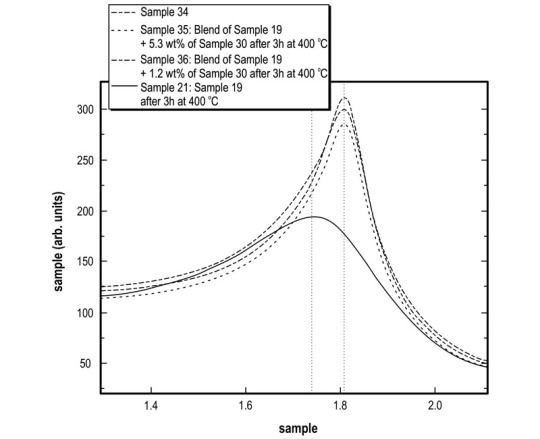
#patent illustration requirements#patent illustration services#patent illustration#patent drawings#patent services#intellectual property
0 notes
Text
Use PPH to Expedite Prosecution of Invention Patents in China
The examination prosecution of invention patents in China generally takes two years. Patent Prosecution Highway (PPH) is one way to expedite prosecution.
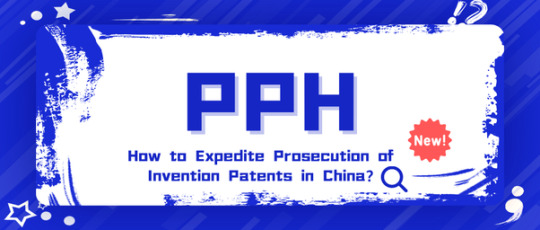
What is Patent Prosecution Highway (PPH)?
PPH is a framework in which an application whose claims have been determined to be patentable in the Office of First Filing (OFF) is eligible to go through an accelerated examination in the Office of Second Filing (OSF) with a simple procedure upon applicant’s request.
China is party to PPH agreements with many countries including the United States. Simply put, if you file a US application first, and receive a Notice of Allowance or an Office Action indicating one or more allowable claim(s), you may use it to expedite the examination procedure of its counterpart Chinese application.
How fast?
If a request for PPH is granted, you may receive the first Office Action within 2 months, several months earlier than ordinary applications.
When can you file the PPH request?
The application has entered the phase of substantive examination, but the CNIPA has not issue Office Actions. It is recommended that you file PPH request when file Request for Substantive Examination.
What are the requirements for PPH?
1) The Chinese application have a counterpart application in other participating countries.
2) At least one claim in the corresponding application indicated to be patentable.
3) Claims in the Chinese application must sufficiently correspond to an allowed claim in the corresponding application.
Both Paris-PPH and PCT-PPH are applicable for Chinese patent applications. That is to say, either you file a US application and receive favorable results, or you file a PCT application in the US and receive positive examination reports, in both cases, you can file a PPH request for its corresponding Chinese application.
What are the documents needed for PPH request?
1) PPH request form;
2) Office actions from OFF and the translations;
3) Allowable claims and the translations;
4) Prior art from the priority application;
5) A table showing correspondence between the pending Chinese claims and the allowed claims of the priority application.
The materials can be prepared by your Chinese counsel. Just follow their instructions.
1 note
·
View note
Text
0 notes
Photo

Patent Law Firm in Guwahati and Patent Related Services
LS Davar is the India’s largest, and oldest law firm. We are the most trusted Patent Law Firm in Guwahati and provide end to end patent related services. A strong patent regime is one of the essential pillars for growing economy of any country. India has realized the importance of having a powerful intellectual property (IP).
0 notes